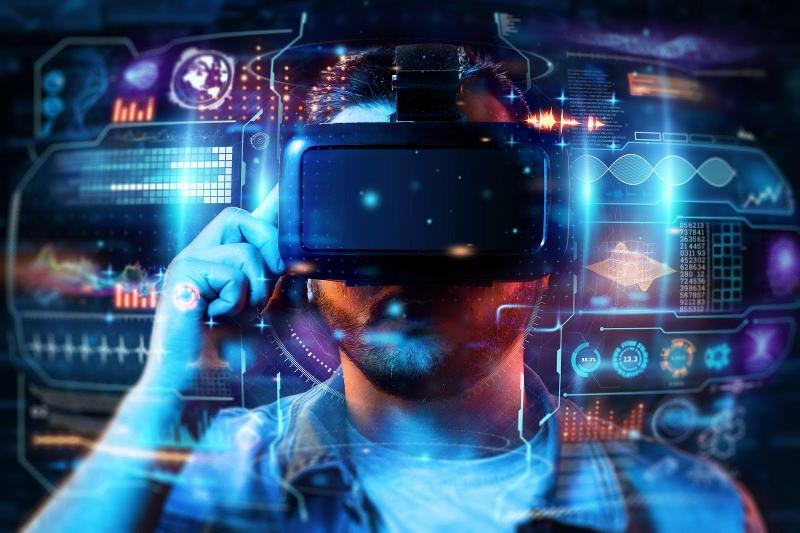Welcome to the exciting world of augmented reality (AR) and virtual reality (VR) gaming! In this article, we will delve into how these innovative technologies are revolutionizing the gaming industry. From high-fidelity graphics to modern haptics and body tracking, AR/VR gaming is pushing the boundaries of immersion and interactivity. However, with great advancements come challenges such as VR sickness and privacy concerns. But fear not, as we explore the future of AR/VR gaming, we will uncover the potential integration of AI and natural language processing, paving the way for personalized gaming experiences. Get ready to embark on a thrilling journey into the future of gaming!
The Notion of Augmented Reality
Explore the concept of augmented reality and its practical applications in our daily lives.
Augmented reality (AR) is a technology that superimposes computer-generated elements onto the real world, enhancing our perception and interaction with our surroundings. Whether it's using an app to try on clothes or playing Pokémon Go, AR has become a part of our lives without us even realizing it.
Unlike virtual reality, which completely immerses users in a digital world, AR is more subtle and practical. It allows us to view the real world through a device equipped with a screen and camera, creating the illusion that digital objects are physically present in our immediate vicinity.
What Is Virtual Reality
Discover the origins and immersive experience of virtual reality (VR) gaming.
Virtual reality (VR) takes us on a journey into entirely digital worlds, realms, or cosmos. The concept of VR dates back to 1960 when the first VR head-mounted display, known as the Telesphere Mask, was created. While the technology has evolved since then, the fundamental principles remain the same.
When wearing a VR headset, users are transported to a virtual world where their surroundings are completely disguised. This immersive experience is akin to entering a video game, with stereoscopic 3D, broad vision, and stereo sound enhancing the sense of presence.
Trends in AR/VR Gaming
Explore the latest trends in AR/VR gaming, from high-fidelity graphics to spatial audio.
AR/VR gaming has witnessed several exciting trends that have enhanced the immersive experience for players:
High-Fidelity Graphics
Game developers are pushing the boundaries of photorealism, employing advanced graphics methods, lighting models, and physics simulation to create stunning visuals.
Modern Haptics
Advanced haptic systems allow for realistic tactile feedback, enhancing the interaction between players and the digital environment.
Body Tracking
Precise movement tracking, including head, hands, and eye tracking, has become more sophisticated, thanks to upgraded sensors and algorithms.
Spatial Audio
Three-dimensional sound adds depth and immersion to games, allowing for more effective storytelling and a heightened sense of presence.
Challenges in AR/VR Gaming
Explore the challenges faced by AR/VR gaming, from VR sickness to privacy concerns.
While AR/VR gaming has opened up new possibilities, it also comes with its fair share of challenges:
VR Sickness
VR sickness occurs when there is a disconnect between the mind's perception of the virtual world and the body's perception of the real world. This can lead to feelings of nausea and discomfort, affecting the overall gaming experience.
Privacy & Ethics
As with any technology, AR/VR raise concerns about privacy and ethics. The use of personal information and the potential for addiction to VR are important issues that need to be addressed to ensure a safe and secure gaming environment.
Unsafe Space
Some users worry about the safety of using VR equipment, as it can lead to accidents if users are not aware of their real-world surroundings. Ensuring a secure and controlled gaming environment is crucial for a seamless and enjoyable experience.
Exploring the Future of AR/VR Gaming
Discover the exciting future of AR/VR gaming, including the integration of AI and natural language processing.
The future of AR/VR gaming is full of possibilities and advancements:
Integration with AI: The integration of artificial intelligence (AI) with AR/VR technologies has the potential to revolutionize gaming. AI can personalize gaming experiences by tailoring challenges and difficulty levels based on individual players' abilities and performance.
Natural Language Processing: In the future, natural language processing may enhance interactivity in games, allowing players to have conversations with in-game characters and control gameplay using their voices.
As we venture into this exciting future, it is important to have a committed team that embraces challenges and listens to player feedback. The rapidly evolving AR/VR sector holds immense promise, and those who are passionate about shaping its future will play a vital role in its success.
Conclusion
AR/VR gaming has revolutionized the gaming industry, offering immersive experiences and pushing the boundaries of what is possible. With high-fidelity graphics, modern haptics, and spatial audio, players can truly feel like they are part of the virtual world.
However, challenges such as VR sickness and privacy concerns need to be addressed to ensure a safe and enjoyable gaming experience. The future of AR/VR gaming holds even more promise, with the integration of AI and natural language processing opening up new possibilities for personalized and interactive gameplay.
As we continue to explore the exciting world of AR/VR gaming, it is important to embrace the opportunities and challenges that come with it. By staying at the forefront of innovation and listening to player feedback, we can shape the future of gaming and create unforgettable experiences for players around the world.
FQA
What is the difference between augmented reality and virtual reality?
Augmented reality (AR) superimposes computer-generated elements onto the real world, enhancing our perception of the surroundings. Virtual reality (VR) completely immerses users in a digital world, creating a simulated reality.
What are some of the challenges in AR/VR gaming?
Some challenges in AR/VR gaming include VR sickness, privacy concerns, and the need for a safe and controlled gaming environment.
What does the future hold for AR/VR gaming?
The future of AR/VR gaming is promising, with advancements in AI integration and natural language processing. These technologies will personalize gaming experiences and enhance interactivity.

